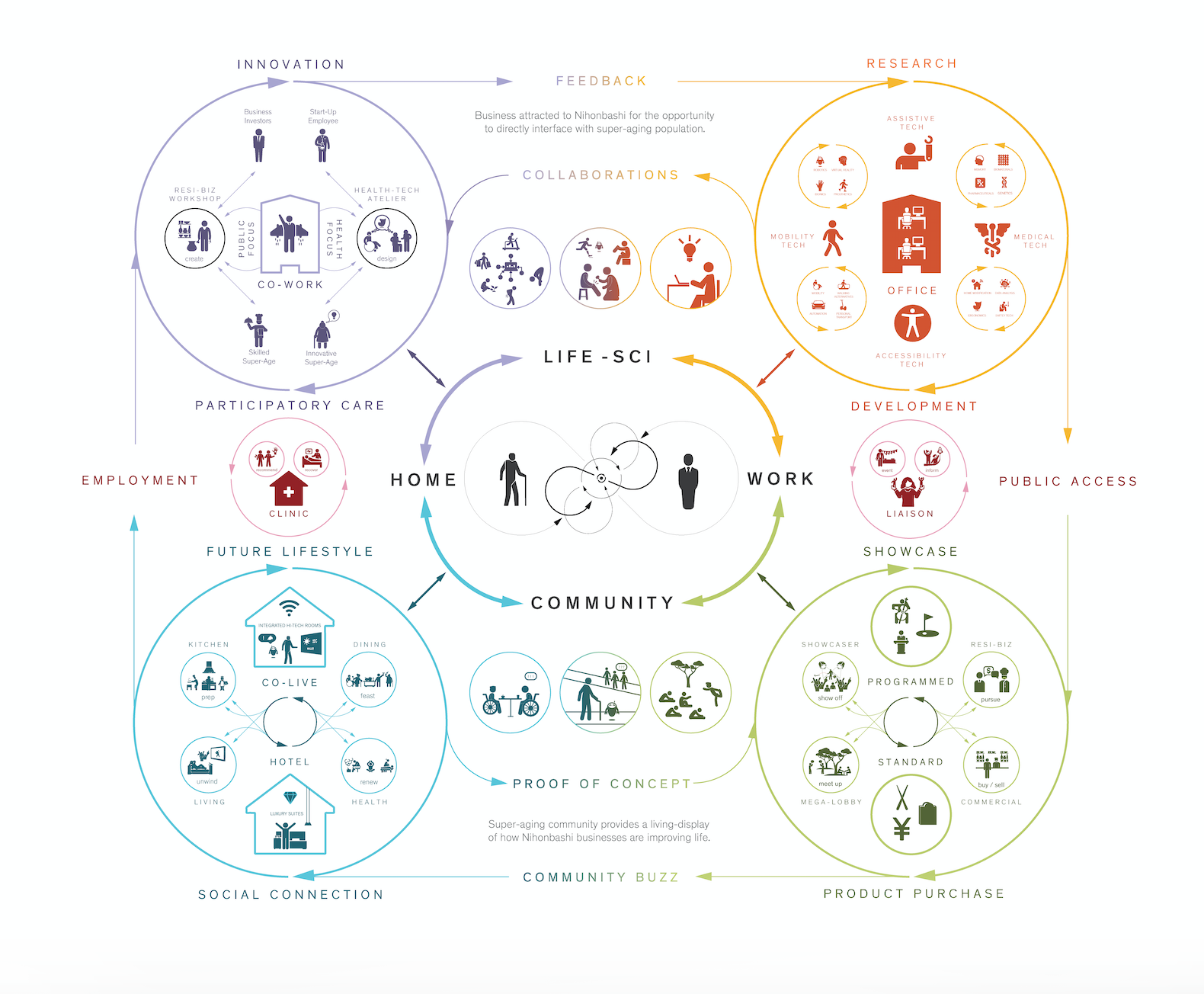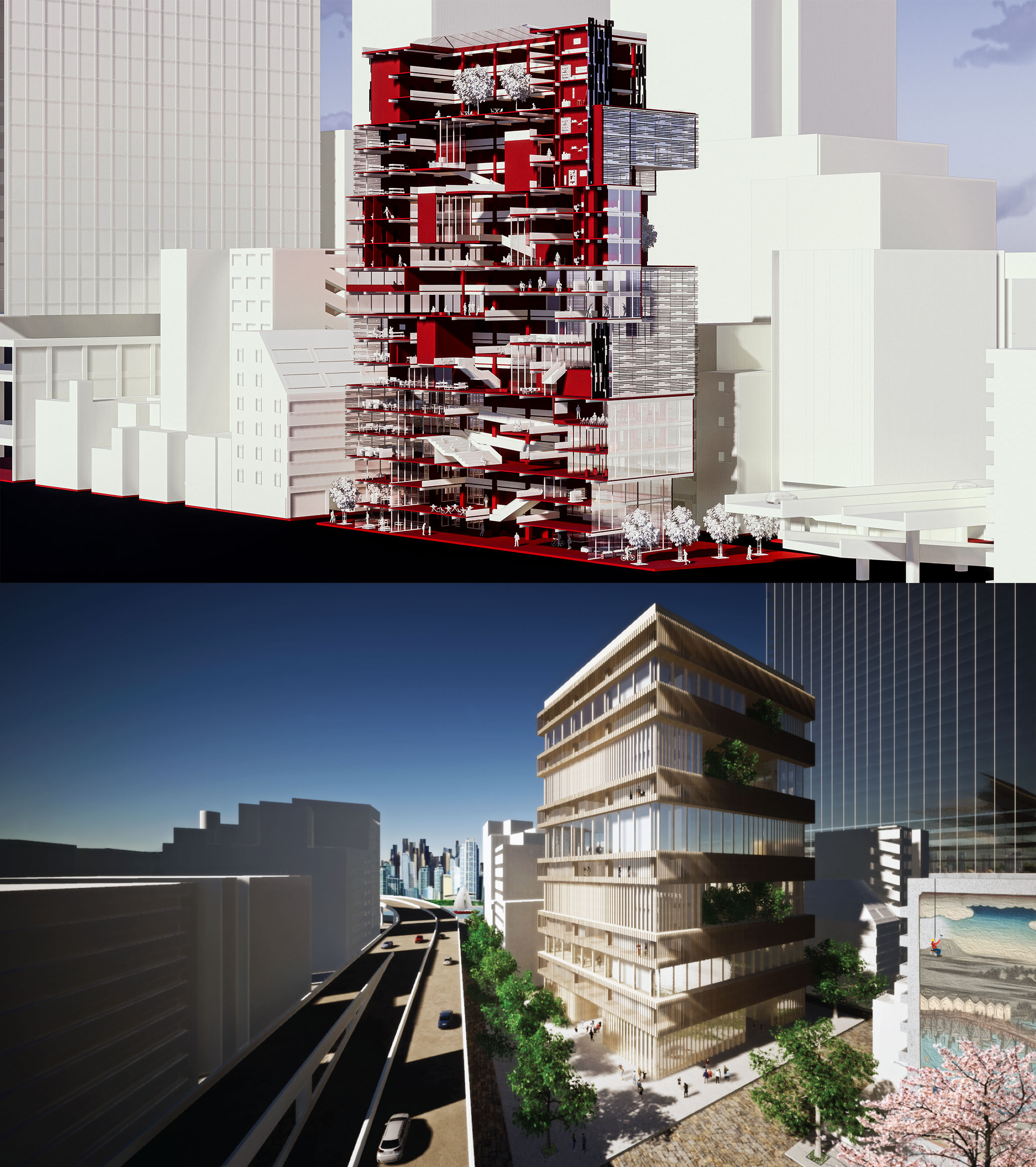Students receive Chao-Di Su Award


In June 2020, two WORKHOUSE Research Studio students, Jacob Sertich and David Vasquez received the Chao-Di Su Award for the Best Project in Graduating class 2019-2020.
Students worked on the site in Nihonbashi, Tokyo, and addressed the pressing issue of accommodating the needs of an aging society in Japan. Poly-Mix offers a poly-programmatic residence for the super-aging population that is in symbiosis with the Nihonbashi life sciences district.
The project aims to develop a dynamic equilibrium that contributes to the site, district, and countrywide solutions. The approach redefines the pairing of home and work for the super-aging population by strategically positioning between cutting edge life science businesses and the soon-to-be bustling Nihonbashi waterfront redevelopment district.
About POLY-PROGRAMMATIC Architecture:
A Dynamic Equilibrium Equilibrium, defined as a “state of balance”, carries implications of stasis, regularity and conformity. Shin-Ichi Fukuoka assigns a dynamic role to equilibrium, which facilitates continuity, flexibility and interconnection. Fukuoka defined this dynamic equilibrium as the “state of flux between…degradation and synthesis” that serves as the mechanism in which “entropy [can be] exported from a system.” Similarly, the balanced scale, aequi-libra, maintains equilibrium through an ephemeral flow of continuous additions and interventions. Currently, buildings are increasingly considered poly-programmatic vessels that contain a multiplicity of programs, tenants, and timelines. Economic, social, and cultural intersections and development are built into the framework of poly-programmatic buildings. Poly-programmatic buildings act as systems of dynamic equilibrium made manifest into programmatic and economic production. These buildings provide a prolonged but concentrated snapshot of the equilibrium’s dynamic state of flux. The following case studies are unique examples of mixed-use projects that imbue dynamic equilibrium. However, these examples lack the architectural development that fully corresponds to the new phenomenon, allowing a new architectural typology of the poly-programmatic to emerge. This condition enables future designers to analyze and react to the increasing poly-programmatic trend with its ties to dynamic equilibrium, which could serve as the basis of the new architectural typology that has not been fully developed yet. Poly-mix fills this gap and provides innovative and flexible solutions for the most pressing issues.

